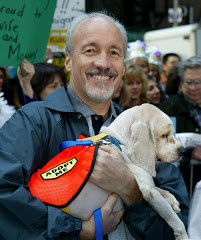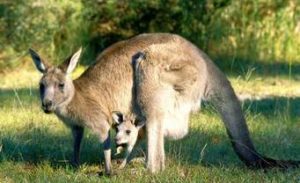LA Animal Services has long been committed to making Los Angeles a “no kill” community for animals. Over the past several years the Department has implemented numerous programs and policies to achieve this goal with some remarkable success.
Recently there has been a little buzz in the animal welfare community about a “No Kill Equation” for local government animal care and control agencies. Advocates of this book claim it to be a revolutionary formula for achieving “no-kill.” In fact, the “No-Kill Equation” is neither new nor revolutionary but is actually comprised of ten common sense, long-standing practices embraced and implemented by LA Animal Services with remarkable results.
I am beginning a series of blogs designed to assess and compare the so called “No-Kill Equation” to LA’s programs and practices. Over the coming weeks I will share each No-Kill Equation recommendation followed by an analysis on how LA Animal Services has been addressing the same issue for, in some cases, many years. I will begin this series with the first of the No-Kill Equation recommendations which is Feral Cat TNR Program.
The Ten “No-Kill Equation” Recommendations are:
1. Feral Cat TNR Program
2. High Volume/Low-Cost Spay/Neuter
3. Rescue Groups
4. Foster Care
5. Comprehensive Adoption Program
6. Pet Retention
7. Medical and Behavioral Rehabilitation
8. Public Relations/Community Involvement
9. Volunteers
10. A Compassionate Director
The No-Kill Equation will appear in font.
The analysis of LA Animal Services’ efforts will follow in italics.
I. Feral Cat TNR Program
Many animal control agencies in communities throughout the United States are embracing Trap, Neuter, Return programs (TNR) to improve animal welfare, reduce death rates, and meet obligations to public welfare and neighborhood tranquility demanded by governments. In San Francisco, for example, the program was very successful, resulting in less impounds, less killing and reduced public complaints. In Tompkins County, an agreement with county officials and the rabies control division of the health department provided for TNR as an acceptable complaint, nuisance and rabies abatement procedure. In specific cases, the health department paid the Tompkins County SPCA to perform TNR.
Ed’s Analysis: The Los Angeles Board of Animal Services Commissioners in 2005 embraced trap-neuter-return (TNR) as a preferred policy and the Department informally aids feral cat rescuers on a non-programmatic basis.
The Department has no formal TNR program yet because a proposal to change City law to officially permit such a program has been delayed by threats from environmental and wildlife organizations insisting that TNR is unacceptable. They insist that the City of Los Angeles must complete a full environmental review to show that such a program will not harm bird species and habitat despite numerous reports from respected environmental organizations stating the real threats to bird species and habitats are urban development, habitat destruction and the effects of global warming.
Research and data does not support a dispositive conclusion that feral cats are responsible for species decline and the National Audubon Society supported prior state legislation, Assembly Bill 302, the “Feline Fix Bill,” requiring among other things that cats permitted outdoors be spayed or neutered.
Nonetheless, LA Animal Services is working with the Bureau of Engineering’s environmental unit to prepare appropriate documentation to comply with the California Environmental Quality Act. There may be no other locale in the United States where environmentalists have actively attempted to block TNR without either considering a compromise or offering to help design a viable program that addresses their concerns.
The Department prefers to form a partnership with environmental groups as done in the state of New Jersey where the Audubon Society and The Burlington County Feral Cat Initiative are working together to craft humane and environmentally friendly solutions to reduce the feral cat population. It is LA Animal Services’ desire and duty to care for all of the City’s animals in need and the Department is currently looking to resolve these issues as expeditiously as possible via the environmental clearance process.
In the meantime, LA Animal Services’ North Central Spay/Neuter Clinic is currently devoted to cat sterilization. Since 2006 the Department spays or neuters over 8,000 feral cats annually independent of and in addition to any formal spay/neuter or TNR programs. There is no record of any municipality funding more feral cat surgeries annually than LA City.
I think it might be helpful to explain my commitment to TNR.
Without question, one of the biggest challenges to achieving no-kill in Los Angeles is implementing a program to effectively reduce the number of feral cats in our neighborhoods. Estimates on the feral cat population in LA are difficult to make, but they range from the tens of thousands to hundreds of thousands.
Feral cats are cats that have reverted to a wild state. They are born from tame unaltered cats that owners abandon or allow to run loose. These cats mate with other free roaming cats, and their offspring, raised without human compassion, are wild, or feral. These cats then grow up and breed with other feral and free roaming pet cats and the cat population increases exponentially.
Communities employ one of three methodologies to deal with feral cats: 1) Do nothing, 2) Eradication, or 3) Trap/Neuter/Return.
While it is easy to understand why doing nothing has little effect on the problem, it is not as easy to understand why eradication does not work.
Although many communities employ eradication or “catch-and-kill” as a remedy to this vexing problem, 30 years of catch and kill in communities across the United States has irrefutably demonstrated that this methodology does not work.
There are very real biological reasons why catch and kill fails. Wild animals tend to be “survivors.” Feral cats, which are wild animals, typically live in colonies of 6 to 20 cats. You often never see all the cats in a colony and it is easy to underestimate the size of a feral cat problem in a neighborhood. When individuals or authorities try to catch cats for extermination it heightens the biological stress of a colony.
This stress triggers two survival mechanisms causing the cats to 1) over-breed, and 2) over-produce. That is, rather than having one litter per year of two or three kittens, a stressed female could have two or three litters a year of 6 to 9 kittens each.
Even if a person was successful in catching and removing all the feral cats from a neighborhood, that creates a phenomenon called, “the vacuum effect.”
When some or all the cats in a colony are removed, cats in surrounding neighborhoods recognize an opened ecological niche (especially a place with food sources). The removed colony actually kept surrounding colonies at bay. When a colony is removed, all deterrents evaporate and the surrounding cats enter the new territory to over-breed and over-produce, with all the associated annoying behaviors.
The end result of the catch-and-kill methodology is always the same: the vacated neighborhood quickly finds itself again overrun with feral cats fighting for mates, over-breeding, caterwauling, and spraying for territory.
Thirty years of catch-and-kill have taught us that this methodology only exacerbates the problem. It is not a solution at all.
Albert Einstein defined “insanity” as doing the same thing over and over again expecting different results. That is why so many communities are trying the newest alternative, trap/ neuter/return, or TNR.
TNR is being practiced in more and more communities across the United States and around the world with amazing results.
When TNR is employed, all the feral cats in a neighborhood are trapped, sterilized, and returned to the area where they originated. They are returned under the care of a Colony Manager. The Colony Manager is a trained volunteer in the neighborhood willing to feed, water, and care for the colony and keep an eye out for any new cats. Once the colony cats are all neutered, new cats tend to be recently abandoned domestics that can be placed for adoption.
There are many benefits to TNR. 1) TNR prevents the vacuum effect from developing. 2) Altered cats display none of the troubling behaviors of intact cats: fighting and caterwauling for mates, and spraying for territory. 3) The cats continue to provide rat abatement, a service many neighborhoods rely on, and 4) because feral cats tend to live significantly shorter life spans than domestic indoor cats the problem literally solves itself through attrition, provided TNR is implemented community wide.
TNR also addresses the concern that feral cats tend to create a public nuisance on campuses and in parks. There is an old adage that says “you can’t herd cats.” In fact, you can herd neutered cats because they tend to hang around the food bowl. Because they no longer have the urge to breed and prey they tend to follow the food bowl wherever the feral cat manager takes it. Feral cats can be trained to congregate in campus or park areas out of the way of the public.
Clearly, TNR is the only viable, non-lethal, humane and cost effective solution to our communities’ feral cat problems. I look forward to the day in the not-too-distant future when Los Angeles can complete the thorough California Environmental Quality Act review required for the legalization of a formal TNR program here.


